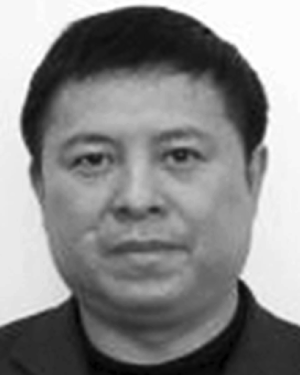The system model of the proposed two-tier downlink wireless backhaul heterogeneous network.
Abstract:
We design an energy and spectral efficiency evaluation framework for wireless backhaul heterogeneous networks by jointing the load balancing and interference management. ...Show MoreMetadata
Abstract:
We design an energy and spectral efficiency evaluation framework for wireless backhaul heterogeneous networks by jointing the load balancing and interference management. Instead of achieve rate in the conventional association, the proposed load balancing strategy utilizes the effective rate with imperfect channel state information, which comprehensively considers the number of associated users, bandwidth allocated to wireless backhaul, and the achieve rate. Moreover, the proposed interference management combines the reverse time division duplexing with power optimization control. The formulated problem is a multi-objective optimization problem, maximizing the energy efficiency and spectral efficiency simultaneously. With the scalarization approach, the original problem is then converted into a single-objective optimization problem, but it is still a nonconvex problem and generally NP-hard. To deal with it, a novel global lower bound maximization algorithm is developed, which iteratively solves the convex approximated problem until convergence. Finally, the convex approximated problem can be decoupled into smaller sub-problems by the alternating direction method to develop a distributed algorithm. Simulation results demonstrate that the proposed algorithms can significantly improve energy and spectral-efficient performance, and are superior to other algorithms.
The system model of the proposed two-tier downlink wireless backhaul heterogeneous network.
Published in: IEEE Access ( Volume: 6)
Funding Agency:

Department of Information and Communication Engineering, Tongji University, Shanghai, China
Bo Huang received the M.S. degree in computer application technology from Changzhou University, Changzhou, China, in 2013. He is currently pursuing the Ph.D. degree with the School of Electronics and Information Engineering, Tongji University, Shanghai, China. His research interests focus on 5G, resource allocation, and wireless backhaul, especially for the densely deployed small cells.
Bo Huang received the M.S. degree in computer application technology from Changzhou University, Changzhou, China, in 2013. He is currently pursuing the Ph.D. degree with the School of Electronics and Information Engineering, Tongji University, Shanghai, China. His research interests focus on 5G, resource allocation, and wireless backhaul, especially for the densely deployed small cells.View more

Department of Information and Communication Engineering, Tongji University, Shanghai, China
Aihuang Guo received the B.E. degree in applied physics from the China University of Mining and Technology, the master’s degree in circuit signal and system from the Coal Science Research Institute, and the Ph.D. degree in electronic science and technology from Xi’an Jiaotong University. He is currently a Professor with the Department of Information and Communication Engineering, Tongji University, Shanghai, China. His ma...Show More
Aihuang Guo received the B.E. degree in applied physics from the China University of Mining and Technology, the master’s degree in circuit signal and system from the Coal Science Research Institute, and the Ph.D. degree in electronic science and technology from Xi’an Jiaotong University. He is currently a Professor with the Department of Information and Communication Engineering, Tongji University, Shanghai, China. His ma...View more

Department of Information and Communication Engineering, Tongji University, Shanghai, China
Bo Huang received the M.S. degree in computer application technology from Changzhou University, Changzhou, China, in 2013. He is currently pursuing the Ph.D. degree with the School of Electronics and Information Engineering, Tongji University, Shanghai, China. His research interests focus on 5G, resource allocation, and wireless backhaul, especially for the densely deployed small cells.
Bo Huang received the M.S. degree in computer application technology from Changzhou University, Changzhou, China, in 2013. He is currently pursuing the Ph.D. degree with the School of Electronics and Information Engineering, Tongji University, Shanghai, China. His research interests focus on 5G, resource allocation, and wireless backhaul, especially for the densely deployed small cells.View more

Department of Information and Communication Engineering, Tongji University, Shanghai, China
Aihuang Guo received the B.E. degree in applied physics from the China University of Mining and Technology, the master’s degree in circuit signal and system from the Coal Science Research Institute, and the Ph.D. degree in electronic science and technology from Xi’an Jiaotong University. He is currently a Professor with the Department of Information and Communication Engineering, Tongji University, Shanghai, China. His main research directions are broadband communication and signal processing.
Aihuang Guo received the B.E. degree in applied physics from the China University of Mining and Technology, the master’s degree in circuit signal and system from the Coal Science Research Institute, and the Ph.D. degree in electronic science and technology from Xi’an Jiaotong University. He is currently a Professor with the Department of Information and Communication Engineering, Tongji University, Shanghai, China. His main research directions are broadband communication and signal processing.View more

